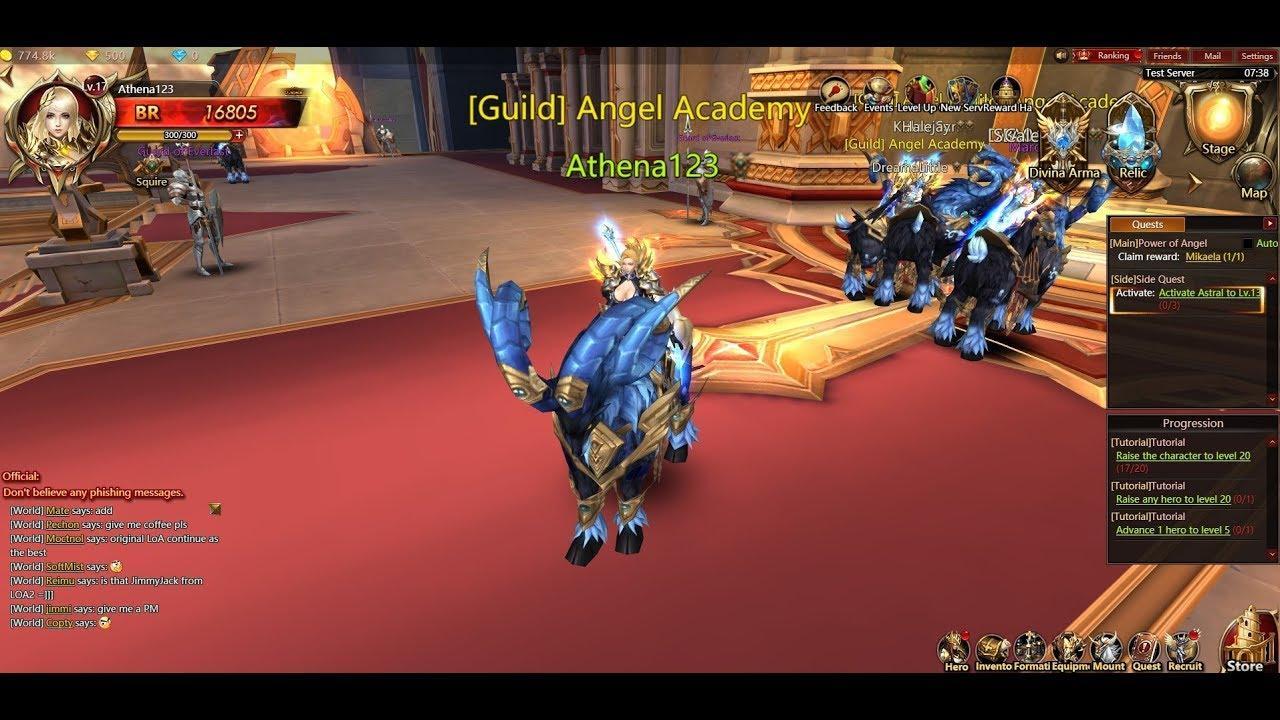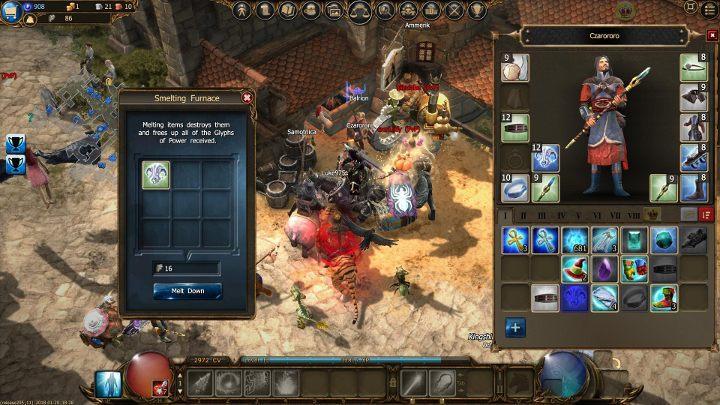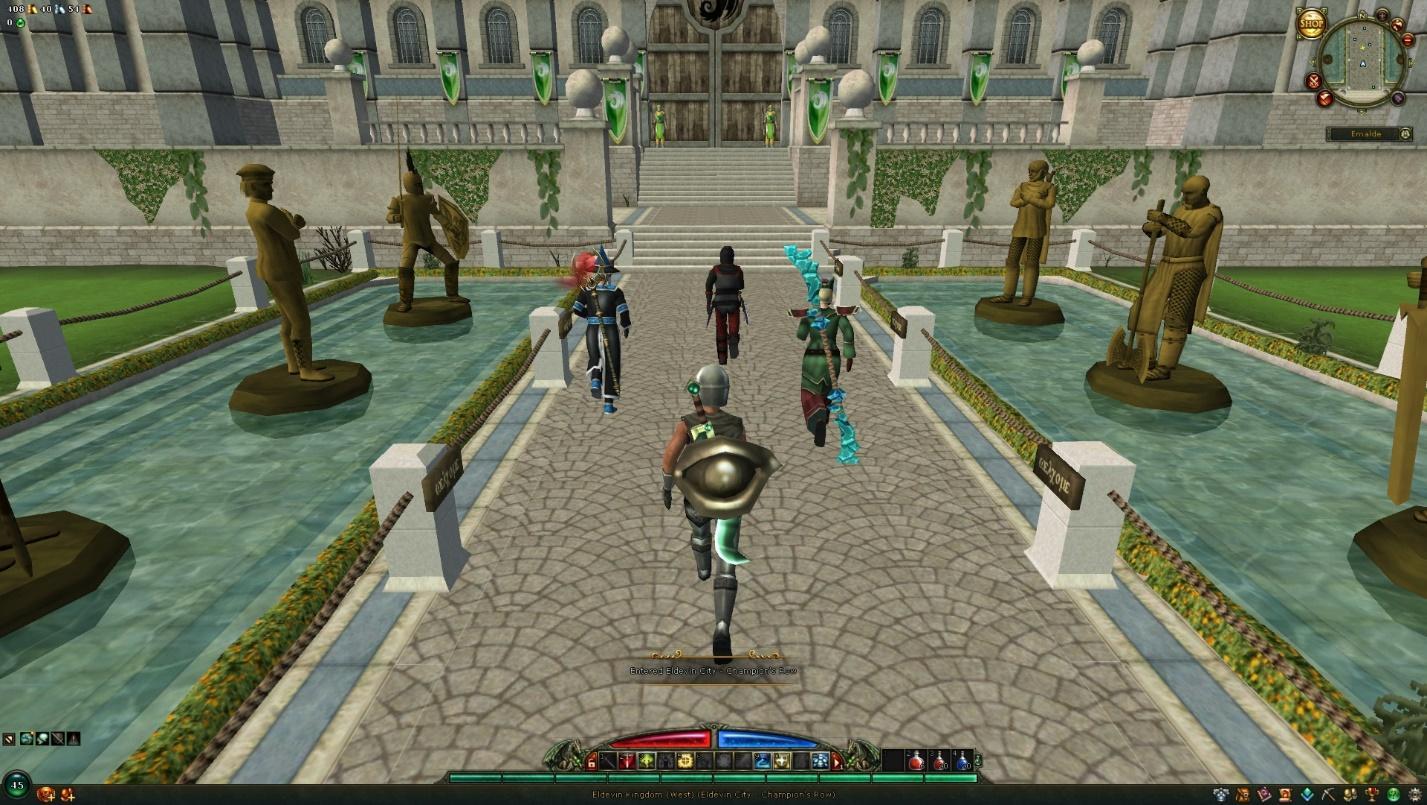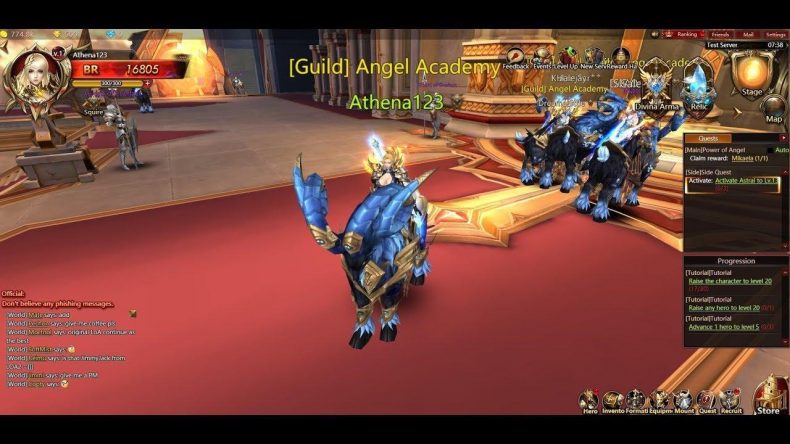MMORPGs have a long and storied history, and have evolved dramatically over the years since their inception. Pardon this brief, highly condensed history lesson, but it may help you appreciate browser-based MMORPGs in a new light.
The earliest examples of MMOs can be traced back to MU*s, which originated with MUD (Multi-User Dungeon). It had no graphics – it was entirely text-based, and users typed all of their commands to their characters (get sword, kill goblin, drink health potion….); MUD originally ran on the University of Essex network, though after users were able to connect via JANET (an alternate computer network) via a guest account, it literally became the first online RPG in 1980.
After MUDs, graphical MMOs started being developed – in fact, some of the original MMORPGs like Ultima Online and Sony’s Everquest were originally referred to as “graphical MUDs”, before the phrase MMORPG was coined (by the creator of Ultima Online, no less). One of the very first browser-based MMORPGs, RuneScape, was actually intended to be a text-based MUD, until graphics were added early in development.
In any case, as graphics advanced, there was no way MMOs could be played in the browser, due to bandwidth limitations. So as MMORPGs became more modern, they were released either through stand-alone clients you downloaded (which took forever back then), or on physical CD.
Fast forward a good number of years, and browser-based MMORPGs started to become a real possibility, as internet speeds increased. Earth Eternal was a great example of a fairly “advanced” browser-based MMORPG (in its time), as it had very nearly World of Warcraft quality graphics and gameplay, in your browser. This was pretty remarkable for 2009 online gaming, though Earth Eternal ended up going bust.
Browser-based games in general, not just BBMMOs, have been evolving, thanks to the advances in WebGL rendering. Advanced shading and lighting techniques, such as found in Five Nights at Freddys, or multiplayer FPS games like Shellshockers IO, are completely powered by browser technology.
The main challenge behind a browser-based MMORPG is competing with client-based MMOs where all of the game’s resources are stored locally, on your computer.
When you need to stream high-resolution textured and character models for an online game in your browser, it takes a lot of bandwidth. Thus, creating an AAA-level browser-based MMO has simply not been possible, but again, times are evolving. The average bandwidth in the US is now around 26Mbps, which isn’t even the fastest – Singapore clocks in at an average 60Mbps, and Denmark hovers around 43Mbps (Source).
So now that I’ve explained the history of how browser-based MMOs have slowly evolved, lets look at how far they’ve come, and what browser-based MMOs are available today – and maybe speculate a bit on the future of the browser-based MMORPG industry.

League of Angels is a turn-based MMO that allows you to jump pretty much straight into the action. It is not a “traditional” MMO in the sense that you roll a character and spend a vast amount of time on a character sheet. In fact, you barely control your character for a good part of the early game.
As soon as you register, you choose a character, and then you watch your character run between quest-givers, and engage in auto-battles. Its really a bit strange – the game pretty much plays itself for you. If you try to take manual control of your character, it says the feature is locked until level 21. So basically, you watch the game play itself until you’re able to take manual control of your character – the only thing you really do between battles is accept quest rewards.
The graphics are pretty, and the servers are highly active. There’s also an incredibly steep learning curve – so the point of “auto-play until level 21” is that you’re supposed to be watching carefully and taking notes. It’s really weird at first, but its super popular with “millions of subscribers”, so we’re recommending it.

If you’re feeling a bit nostalgic and want something a bit more RuneScape-esque in gameplay, Eldevin is certainly right up your alley. Eldevin is a 3D browser-based MMO that is very much a combination of RuneScape and World of Warcraft. It has nice graphics that are a bit reminiscent of WoW on low-medium graphics settings.
Eldevin is your standard fantasy/action MMORPG, with a lot of character development. It has skill-trees, quests, and one cool thing is that you aren’t necessarily locked into classes. You can invest your skill points into multiple classes, if you want to go for the “jack-of-all-trades, master of nothing” type of character build.
Eldevin can actually be a bit addicting, especially if you’re looking for something that’s really RuneScape with updated graphics. That’s not a dig at Eldevin, RuneScape was a great game in its day, so Eldevin does a fine job of bringing back some of that nostalgia, while offering an updated gameplay experience.

If you want the Diablo / Torchlight / Ultima Online gameplay experience in a browser-based MMO, Drakensang Online may be the isometric action-RPG for you. Its really quite masterfully done, and in full-screen mode, could even convince you that you’re playing a native standalone-client game.
There are only four classes to choose from – Spellweavers, Dragonknights, Rangers, and Steam Mechanicae. But sometimes, less is better. You won’t need to spend much time putting together a perfect party, like in World of Warcraft, where you absolutely need certain roles filled. No, this is mindless action-RPG clicking. Kill, loot, receive reward.






